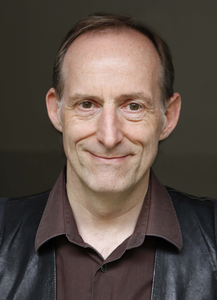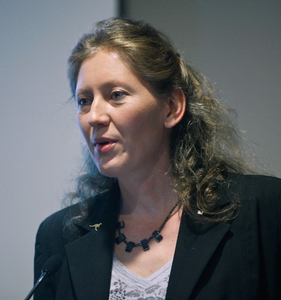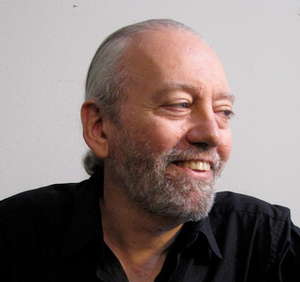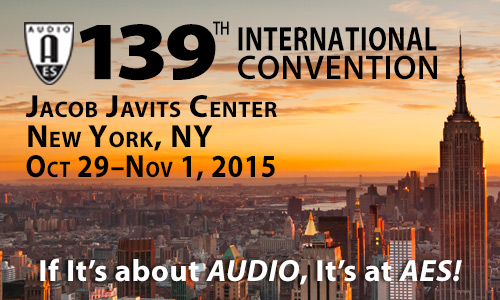
AES New York 2015
Sound for Picture Track Event Details
Thursday, October 29, 9:30 am — 10:30 am (Room 1A18)
Spatial Audio Demo: SA1 - Object Based Immersive / 3D Audio Production
Presenter:Tom Ammermann, New Audio Technology GmbH - Hamburg, Germany
Abstract:
Some new object based formats like Dolby Atmos, MDA, MPEG-H, and ECMA 407 were introduced to the audio industry recently. But how to create content, how to master, how to deliver, and finally content applications are still a bit unclear for a lot of audio producer and service provider. Some insides, tools, strategies and listening examples are given in this event.
Friday, October 30, 9:00 am — 10:30 am (Room 1A12)
Workshop: W5 - Immersive Audio with Height Channels: Theory and Practice
Chair:David Bowles, Swineshead Productions LLC - Berkeley, CA, USA
Panelists:
Paul Geluso, New York University - New York, NY, USA
Juergen Peissig, Sennheiser Electronics - Wedemark, Germany
Agnieszka Roginska, New York University - New York, NY, USA
Abstract:
The next step in immersive audio is to move into the vertical dimension through height channel recording and reproduction. Vital to this dialogue is a clearer understanding via psychoacoustics of our hearing perception outside the horizontal planes: how this perception influences engineers’ choices in microphone technique and speaker placement. Members of this panel will discuss different recording techniques to capture height channels and whether this audio information can be integrated into conventional stereo and surround-sound recordings. The growing number of 3D mix engines and Blu-ray encoding formats will also be discussed. This workshop will be divided into two parts: a technical panel discussion at Javits Center, followed by playback sessions at the James Dolan Studios at New York University.
Friday, October 30, 10:45 am — 12:15 pm (Room 1A12)
Workshop: W8 - ISO/MPEG-H Audio - The New Standard for Universal Spatial / 3D Audio Coding
Chair:Jürgen Herre, International Audio Laboratories Erlangen - Erlangen, Germany; Fraunhofer IIS - Erlangen, Germany
Panelists:
Alexander Krüger, Technicolor
Nils Peters, Qualcomm - San Diego, CA, USA
Jan Plogsties, Fraunhofer Institute for Integrated Circuits IIS - Erlangen, Germany
Abstract:
Recently, the ISO/MPEG standardization group created the MPEG-H 3D Audio specification to go along with Ultra High Definition Television (UHDT) video. The specification features several unique elements, such as handling of channel-based content, object-based content and higher order ambisonics (HOA) content or the capability of rendering encoded high-quality content on a wide range of loudspeaker setups (22.2 ... 5.1 ... stereo / headphones). This workshop provides an overview of the MPEG-H 3D Audio standard regarding its underlying architecture, technology, performance and how to produce immersive content for it.
Friday, October 30, 12:30 pm — 1:30 pm (Room 1A18)
Spatial Audio Demo: SA6 - ISO/MPEG-H Audio - The New Standard for Universal Spatial / 3D Audio Coding
Presenter:Valentin Schilling, Fraunhofer IIS, Erlangen - Erlangen, Germany
Abstract:
Recently, the ISO/MPEG standardization group created the MPEG-H 3D Audio specification to go along with Ultra High Definition Television (UHDT) video. The specification features several unique elements, such as handling of channel-based content, object-based content and higher order ambisonics (HOA) content or the capability of rendering encoded high-quality content on a wide range of loudspeaker setups (22.2 ... 5.1 ... stereo / headphones). This workshop provides an overview of the MPEG-H 3D Audio standard regarding its underlying architecture, technology, performance and how to produce immersive content for it.
Friday, October 30, 1:00 pm — 5:00 pm (Room 1A14)
Special Event: DTVAG AES Forum
Keynote Speaker:Tom Sahara, Turner Sports Vice President, Operations and Technology, Turner Sports - Atlanta, GA, USA
Abstract:
The Accelerating Pace of Change in Television Audio
Keynote Address: Tom Sahara, Vice President, Operations and Technology, Turner Sports; Chairman, Sports Video Group
What Just Happened?
The impacts of mobile and fixed streaming services have been even greater and more far-reaching than previously predicted. Will this pace of change continue … or accelerate?
Other discussion topics will include:
Wireless Spectrum Roadmap
The FCC’s recent release of rule making around the 600 MHz incentive auction and wireless microphone use provides some clarity about the future but still leaves many questions unanswered.
ATSC 3.0 Audio Update
The multi-year process of defining an audio standard for next-generation broadcast television is coming to a close. What capabilities can we expect? Will ATSC 3.0 provide a template for other future audio services?
Microphone Metadata and Network Control
Networked wireless and native IP microphones have the potential to streamline identification and control of multiple sources in complex mixing environments. How does organic microphone metadata change our approach to mixing, automation, and object audio authoring?
Console Metadata Authoring
As console mixing functions become virtualized over the production WAN, best practices and universal standards need to keep up with the demand for real-time exportable metadata. How is that going?
Higher-Order Ambisonics and Scene-Based Audio
Recent advances in audio coding and real-time processing have made the application of HOA capture and encoding techniques significantly more practical. What are the practical implications of applying HOA techniques to real-time production?
Audio Definition Modeling
Recent EBU standards-making efforts around ADM technology and Broadcast Wave File extensions encompassing ADM open the door for standardized object metadata. With the backing of Dolby and others, is universal audio file interoperable delivery around the corner?
The DTV Audio Group at AES is produced in association with the Sports Video Group and is sponsored by: Calrec, Dolby Laboratories, DTS, JBL, Lawo, Linear Acoustic, Studer.
Friday, October 30, 2:00 pm — 3:00 pm (Room 1A06)
Workshop: W11 - The Changing Audio Deliverables for Broadcast and Media
Moderator:Jay Yeary, Transient Audio Labs - San Antonio, TX, USA
Panelists:
Jeff Brugger, Turner Studios - Atlanta, GA, USA
Michael Cardillo, Creative Waves Inc - Atlanta, GA, USA
Ed Greene
Sean Richardson, Starz Entertainment - Parker, CO, USA
Abstract:
Television content can now be viewed almost anywhere, on screens of all sizes, and on a seemingly limitless number of devices. This multitude of viewing choices means that it is often necessary to finish content differently for each delivery platform, requiring multiple mix passes or automated processing in order to meet an expanding range of delivery specifications. This session will look at how different networks, content providers, and engineers are dealing with the hodgepodge of loudness, channel configuration, codec, and delivery requirements to provide high-quality audio for streaming, video on demand, mobile, cable, and broadcast outlets.
This event is part of the Sound for Pictures Track.
Friday, October 30, 5:15 pm — 6:45 pm (Room 1A10)
Broadcast and Streaming Media: B8 - Mixing for Telemedia in 21st
Moderator:Ed Greene
Presenter:
Bob Katz, Digital Domain Mastering - Orlando, FL, USA
Abstract:
A frank discussion from the mixers chair of the present challenges in crafting program audio for broadcast and the www. There will be a discussion of realistic monitoring situations important for mixers who work in different CR’s. The presentation will also include a review of the circumstances leading us to where we are today and the possible effect of pending new broadcast guidelines from ATSC 3.0 and pending recommended streaming practices for the www. from the AES.
Saturday, October 31, 9:00 am — 10:30 am (Room 1A22)
Archiving: A7 - Special Challenge Metadata: Multimedia-Based Preservation of the Collection Oskar Sala or … How to Safeguard Hitchcock’s Birds
Presenter:Nadja Wallaszkovits, Phonogrammarchiv, Austrian Academy of Science - Vienna, Austria; NOA GmbH
Abstract:
Oskar Sala (1910 – 2002) was a German musician, scientist, and a pioneer of electronic music. He played and further developed the trautonium, a predecessor of the synthesizer. By enhancing and modifying this instrument Sala was able to create totally new sounds and effects. He composed the scores for more than 300 films and created the effect soundtrack for Alfred Hitchcock's film The Birds, receiving many awards for his works. After his death he left, among others, a collection of about 1200 analog magnetic audio tapes which are stored in the archives of Deutsches Museum in Munich. Oskar Sala fully exploited all the possibilities of the analog tape technology, using impressive experimental approaches. His tapes have become artworks themselves, as they comprise a unique richness of very special and specific metadata: most of the tapes are cut up to 200 times per reel, and he used them as a (more or less readable) notebook. Such and many more surprises made the adequate safeguarding and digitization of the collection a unique undertaking. This tutorial outlines the various challenges of this project and discusses the parameters and practical problems of the audio transfer, as well as the strategy of safeguarding the richness of metadata by use of multimedia-based documentation, such as photographic capturing and high definition video recording.
Saturday, October 31, 9:00 am — 10:30 am (Room 1A10)
Broadcast and Streaming Media: B9 - Audio for Over the Top Television (OTT)
Moderator:Skip Pizzi, NAB - Washington DC, USA
Panelists:
Richard Galvan, Senior Technical Marketing Manager for OTT, Dolby Labs - San Francisco, CA, USA
Tom McCarthy, Owner, AM-DVD - Centreville, VA, USA
Sean Richardson, Starz Entertainment - Parker, CO, USA
Abstract:
Like many other industries, television has been disrupted by the Internet, with a growing amount of content delivered to audiences via streaming. The mechanisms involved are substantially different from traditional television delivery, yet the two forms will continue to coexist for some time. Meanwhile, OTT has greater agility to adopt new formats than traditional delivery schemes, and therefore content suppliers are being asked to deliver new components to OTT providers at a rapid pace. This session will address how audio is changing for OTT delivery, presented from the perspectives of technology providers, content producers and service operators.
Saturday, October 31, 10:00 am — 11:30 am (Room 1A14)
Workshop: W17 - Immersive Audio Signal Processing and Effects
Chair:Christof Faller, Illusonic GmbH - Zurich, Switzerland; EPFL - Lausanne, Switzerland
Panelists:
Jean-Marc Jot, DTS, Inc. - Los Gatos, CA, USA
Itai Neoran, Waves Audio Ltd. - Tel Aviv, Israel
Sebastian J. Schlecht, International Audio Laboratories - Erlangen, Germany
Andreas Silzle, Fraunhofer Institute for Integrated Circuits IIS - Erlangen, Germany
Nicolas Tsingos, Dolby Labs - San Francisco, CA, USA
Abstract:
Multichannel surround in 3D and immersive audio open new possibilities for rendering of sound objects and acoustic environments. Experienced experts in the field discuss about audio signal processing and effects for immersive audio, such as rendering of objects in 3D, generation of height channels, reverberators for immersive audio, etc.
Saturday, October 31, 11:00 am — 12:30 pm (Room 1A21)
Workshop: W19 - "The Americans”—Meet the Mixers
Presenters:Ken Hahn, Owner of Sync Sound Inc. Re-recording Mixer and Sound Supervisor - New York, NY, USA
James David Redding, III, Freelance Re-recording Mixer/Sound Editor/Sound Designer - New York City, NY, USA
Abstract:
The Fx series, “The Americans” follows embedded Russian spies (Matthew Rhys and Keri Russell) during in the 1980s. Set in the Washington DC suburbs, but shot in the boroughs of New York, their double lives expose them to both domestic and worldly conflicts. Join Lead Re-recording Mixer (Dial and Music) Ken Hahn and (Sfx) Mixer James David Redding as they look back at some of the challenges they encounter during the sound design and mix of the critically acclaimed “Cold War” drama.
This event is part of the Sound for Pictures Track.
Saturday, October 31, 12:00 pm — 1:00 pm (Room 1A22)
Special Event: Bridging the Gap between Creativity & Technology:Working with Composers on Film and Media Projects for Music and Mix Engineers with Composer/Producer Frank Ferrucci
Presenter:Frank Ferrucci, Manhattan Producers Alliance: VP - New York, NY, USA; Leenalisa Music: Composer/Producer
Abstract:
NYC Film and TV composer Frank Ferrucci has presented his seminars at professional, educational, arts and cultural organizations in New York and Brazil to enthusiastic and capacity audiences. This seminar gives a behind the scenes look into the technological challenges composers and engineers face when collaborating on film, television, and other visual media projects.
The seminar addresses some less obvious but no less important ways that Music Engineers and Film Mixers can best work with composers. Frank delves into the history and evolution of setting up film cues; working with audio & video formats; working with timings and tempo; working with stems; the use of past and current technology; how computers are used in the creative process and how technology can be used to help collaboration be as seamless as possible.
Frank is vice president of Manhattan Producers Alliance, the premier networking organization for audio producers, engineers, sound designers and composers in NYC.
Saturday, October 31, 1:30 pm — 3:00 pm (Room 1A10)
Broadcast and Streaming Media: B11 - Audio for Broadcast Video—Immersive, Personalized, 4K, and 8K
Moderator:Fred Willard, Univision - Washington, DC, USA
Panelists:
Robert Bleidt, Fraunhofer USA Digital Media Technologies - San Jose, CA, USA
Tim Carroll, Telos Alliance - Lancaster, PA, USA
James Moore, DTS, Inc. - Calabasas, CA, USA
Kazuho Ono, NHK Science & Technology Research Laboratories - Setagaya-ku, Tokyo, Japan
Skip Pizzi, NAB - Washington DC, USA
Robert Reams, Consultant - Santa Clara, CA, USA
Jeff Riedmiller, Dolby Laboratories - San Francisco, CA USA
Abstract:
Each of our panelists is at the forefront of harnessing technology to augment the human experience of immersive and personalized audio in 4K, 8K, and ATSC 3.0 broadcast and streaming. Come to share the latest and greatest discoveries and standards proposals forged in the past year. Work in this sphere progresses at a feverish pace as we close in on final standardization and the next magnitude of consumer psycho-acoustic involvement. Don’t miss this chance to present your questions to our experts after they share their most recent stories and accomplishments.
Saturday, October 31, 3:15 pm — 4:45 pm (Room 1A10)
Broadcast and Streaming Media: B12 - Integrating Mobile Telephony and IP in Broadcast
Moderator:Kirk Harnack, Telos Alliance - Nashville, TN, USA; South Seas Broadcasting Corp. - Pago Pago, American Samoa
Panelists:
Mitch Glider, iHeart Media
Dave Immer, DIGIFON/Walnut Studio - Fairfield, CT, USA
Tony Peterle, Worldcast Systems - Miami, FL, USA
Paul Shulins, Greater Media - Boston, MA, USA
Christopher Tobin, Newark Public radio - Newark, NJ USA
Andrew Zarian, GFQ Network - Queens, NY
Abstract:
Engineers are tasked to get broadcasts on-air from some very out-of-the-way places. From car dealers to tire shops, from park concerts to canoe races, and even the occasional balloon glow miles from anywhere, broadcast engineers strive to bring audio and video back to the station. The once-reliable telephone companies have already reduced their connection offerings and service footprint, leaving engineers to be creative in tying the studio to the off-site event. Radio engineers need workable alternatives to ISDN, and many television engineers are restricted from using the satellite truck unless absolutely necessary, leaving them to seek high-bandwidth connectivity, too. Today’s connectivity solutions typically involve IP—both wired and wireless. Often times a clever mix of IP connection services and technologies are required to bring a broadcast in from the field.
Leading broadcast engineers and vendor technical representatives will discuss the latest practices and workable solutions to “get there from anywhere.”
Saturday, October 31, 3:45 pm — 5:15 pm (Room 1A23/24)
Recording & Mastering: RM5 - Raw Tracks 2.0—Anatomy of: On-Set Recording "Nashville"—Keeping it Real
Moderator:Jim Kaiser, CEMB / Belmont University - Nashville, TN, USA
Panelists:
Matt Andrews, Woodland Studios - Nashville, TN, USA
Michael Colomby, Audio Head / Formosa Group - Los Angeles, CA, USA
Fred Paragano
Mike Poole, Mike Poole - Nashville, TN, USA
Glen Trew, Trew Audio - Nashville, TN, USA
Richard Weingart, Formosa Group - Hollywood, CA, USA
Abstract:
The critically acclaimed "Nashville" series (now in its fourth season) is notable for its reliance on "live music performance" as key to its storyline. Join our panel of experienced professionals as they reveal the intricacies required to maintain continuity and reality in each music scene, while supporting the acting talent and providing a compelling (seamless) viewing experience. Some of these features include the capture of the "musical performance," along with preparation to make sure all pre-production music will fit these requirements. Examples from previous season’s shows will demonstrate the way in which the music is developed and recorded in order to best suit the scene and all format releases (including iTunes).
This event is part of the Sound for Pictures Track.
Saturday, October 31, 5:15 pm — 7:00 pm (Room 1A10)
Workshop: W22 - Composing Music for Short-Form, Interstitial, and Episodic Television
Moderator:Jay Yeary, Transient Audio Labs - San Antonio, TX, USA
Panelists:
Timo Elliston, Composer, BANG - New York, NY, USA
Eric Hachikian, Composer, Soundcat Productions - New York, NY / Los Angeles, CA
Reid Hall, Turner Studios - Atlanta, GA, USA
Roy Hendrickson
Scott Hull, Masterdisk - New York, NY, USA; Peekskill, NY, USA
Jeff McSpadden, Composer, Jeff McSpadden - New York, NY, USA
Peter Nashel, Composer, Duotone Music Group
Andrea Yankovsky, Kilpatrick, Townsend & Stockton LLP - New York, NY, USA
Abstract:
Composing music for commercials, advertising, interstitial content, and short-form television is an often demanding way to practice the craft because there is never enough time or enough music to meet client demand. This workshop will look at what it takes to be a successful composer in this high-stress, high-demand environment by examining the workflow, tools, rights management, and client management skills of composers who thrive in this world.
This event is part of the Sound for Pictures Track.
Sunday, November 1, 10:15 am — 1:30 pm (Off-Site 1)
Technical Tour: TT10 - NBC Universal
Abstract:
The tour will include a visit to Studio 6B, home of The Tonight Show starring Jimmy Fallon, and move on to Studio 8G, home of Late Night with Seth Meyer. We will review the audio technology used to produce both shows.
Location: NBC Universal
30 Rockefeller Pl, New York, NY
Bus transportation is not provided. We'd suggest taking the 7 Train to Times Square and then walking up to Rockefeller Center.
Limited to 40 people. A ticket is required - anyone showing up without a ticket will be turned away.
Sunday, November 1, 2:00 pm — 4:00 pm (Room 1A07)
Paper Session: P23 - Cinema Sound
Chair:
Scott Levine, Skywalker Sound
P23-1 Some Observations on Vinegar Syndrome—Scott Dorsey, Kludge Audio - Williamsburg, VA, USA
In the 1980s it became evident that cellulose triacetate, used as a base for motion picture film and recording tape, was unstable and occasionally suffered from deacetylation with no clear pattern as to which material would be stable and which would not. The author recaps existing research on the nature and basic chemistry of vinegar syndrome, adding some observations of his own on various triggers, and describes a unsuccessful attempt to replasticize damaged film and tape so as to make it playable.
Convention Paper 9480 (Purchase now)
P23-2 Hybrid Channel-Object Approach for Cinema Post-Production Using Particle Systems—Nuno Fonseca, IT/ESTG, Polytechnic Institute of Leiria - Leiria, Portugal
Particle systems are a new sound design approach that is receiving some attention from the cinema community due to the ability to handle thousands of sound sources simultaneously. Unfortunately, current immersive object-based audio formats are not prepared for such scale, forcing sound designers to use traditional channel-based audio approaches. This paper presents a hybrid approach that tries to merge the advantages of both object-based audio and channel-based audio. By using audio-objects with static positions, a high number of virtual “speaker channels” can be created, adding more space resolution than traditional channel-based formats, and allowing the mix of thousands of sounds. The proposed method can be used not only with particle systems software but also on object-based audio downmixing processes or even in high-demanding audio post-production workflows.
Convention Paper 9481 (Purchase now)
P23-3 Measurement of Low Frequencies in Rooms—David Murphy, Krix Loudspeakers - Hackham, South Australia
When aligning and tuning sound systems in commercial cinemas and other rooms there are difficulties with setting an appropriate response for low frequencies and the LFE channel. Long standing practice has been to use pink noise and Real Time Analyzers, but this method is “time blind” and includes the reverberation of the room. A new method is outlined for measuring frequency response at low frequencies. This method uses microphones arranged in a low frequency end-fire array to create useful directivity to discriminate against sound waves from rear wall reflections and reverberation. It also operates in the time domain, processing the acoustic impulse response as it arrives at successive microphones–a shotgun microphone writ large.
Convention Paper 9482 (Purchase now)
P23-4 Subjective Listening Tests for Preferred Room Response in Cinemas-Part 1: System and Test Descriptions—Linda A. Gedemer, University of Salford - Salford, UK; Harman International - Northridge, CA, USA
SMPTE and ISO have specified near identical in-room target response curves for cinemas and dubbing stages. However, to this author's knowledge, to date these standards have never been scientifically tested and validated with modern technology and measurement techniques. For this reason, it is still not known if the current SMPTE and ISO in-room target response curves are optimal or if better solutions exist. This paper describes the Binaural Room Scanning system and listening test methodologies for simulating a cinema sound reproduction system through headphones for the purpose of conducting controlled listening experiments. The method uses a binaural mannequin equipped with a computer-controlled rotating head to accurately capture binaural impulse responses of the sound system and the listening space which are then reproduced via calibrated headphones equipped with a head-tracker. In this way, controlled listening evaluations can be made among different cinema audio systems tuned to different in-room target responses. Two different types of listening tests were developed and are described.
Convention Paper 9483 (Purchase now)




